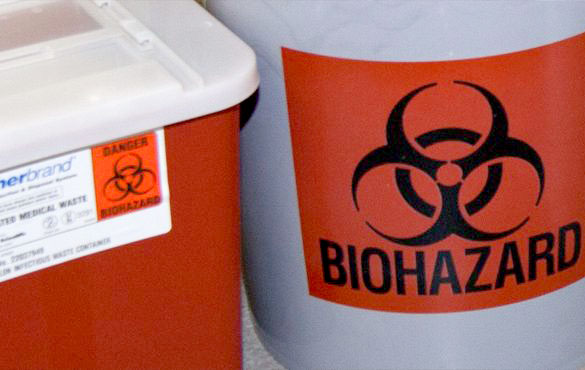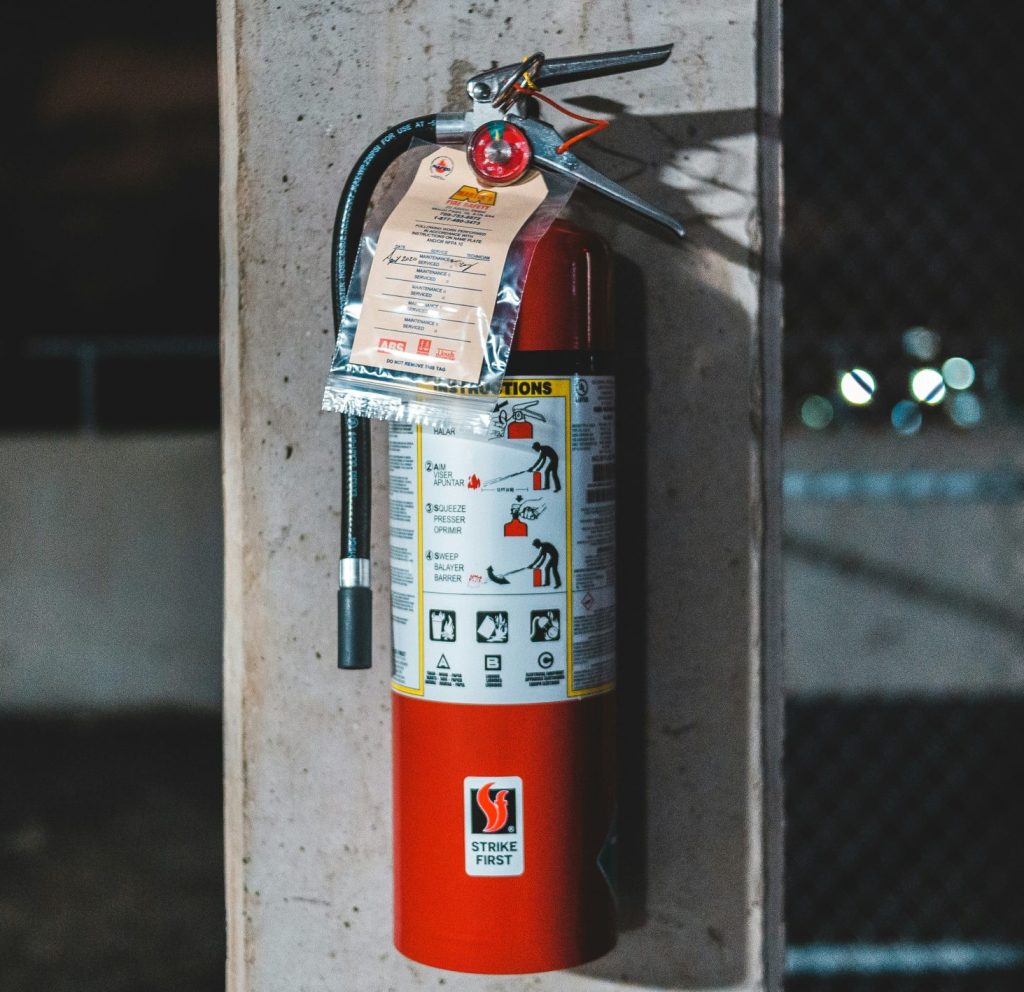Dosimetry/Bioassay
In order to meet the regulatory requirement to maintain public and occupational radiation doses as low as reasonable achievable (ALARA), Radiation Safety Service (RSS) monitors occupational radiation exposure for individuals working with radioactive materials or radiation-generating machines, and maintains permanent records of all occupational radiation doses at U-M.
Occupational radiation exposure includes:
- External exposure to ionizing radiation emitted by radioactive materials
- External exposure from devices that produce x-rays or other forms of ionizing radiation (such as electrons or protons)
- Internal exposure from inhaled, ingested, or absorbed radioactive materials
ALARA Program
U-M management, the U-M Radiation Policy Committee (RPC), the Michigan Medicine Clinical Radiation Safety Committee, and U-M Environment, Health Safety / Radiation Safety Service (RSS) are committed to maintaining occupational radiation doses As Low As Reasonably Achievable (ALARA) and as far below regulatory limits as practical, through implementation of the ALARA Program. The ALARA Program, which is a regulatory requirement and established by the RPC, features ALARA investigation levels that are intended to:
- Help monitor and control occupational radiation doses received by U-M personnel;
- Initiate investigation of doses that exceed a fraction of regulatory limits; and
- Minimize the potential that regulatory dose limits will be exceeded.
Click here to view the policy
External Radiation Exposure
External exposure to ionizing radiation is monitored by wearing a monitoring dosimeter (“badge”). A dosimeter measures and records the accumulated ionizing radiation dose that an individual receives over a specified amount of time (typically a month or calendar quarter). It does not protect you from radiation. There are two types of dosimeters:
- Whole-body dosimeter to monitor general whole body dose
- Ring dosimeter to monitor extremity dose from handling radioactive materials or if the hands are in or near the x-ray beam during a medical or research procedure
The RSS Dosimetry Program provides the appropriate radiation dosimeters, maintains permanent records of all occupational radiation doses, and partners with department liaisons (dosimetry contacts and supervisors) for all matters relating to radiation dosimetry.
Obtaining a Dosimeter
The departmental Dosimetry Contact initiates and submits all requests (to RSS) for new, spare, and replacement dosimeters and notifies RSS of personnel changes (new or terminated personnel, or updated personal information).
At the end of each wear period, current dosimeters are exchanged for new dosimeters per the department’s procedure. Exchanged dosimeters are due to RSS on the 10th day following the end of the wear period.
Proper Wear of the Dosimeter
To ensure accurate readings from the dosimeter, you must:
- Wear your own dosimeter – never allow another person to wear your dosimeter and never wear a dosimeter assigned to another individual.
- Wear your dosimeter for the period of time (wear period) indicated on the dosimeter, starting at the date on the dosimeter. Dosimeters are designed to monitor radiation exposures for a specific wear period.
- Wear your dosimeter in the proper location on your body as indicated below:
| TYPE OF DOSIMETER | WEAR LOCATION | ASSIGNED TO |
| Between the chest and waist | Individuals not wearing a protective apron | |
|
Individuals who wear a protective apron (most UMHHC personnel) | |
|
|
|
| Under protective apron, on abdomen | Declared Pregnant Women | |
|
Preventing Erroneous Readings
To prevent erroneous readings from radiation dosimeters:
- Ensure the front of the dosimeter is visible (i.e., your name and location icon facing out) when wearing the dosimeter
- If wearing two dosimeters, always wear the dosimeters in the proper location; do not wear an over-apron dosimeter under the apron
- Store your dosimeter at work, in an area with low-background radiation and away from radioactive materials and radiation sources when you are not wearing it
- Do not wear your dosimeter when undergoing medical or dental procedures as a patient
- Do not store or place dosimeters in an unfavorable environment such as a hot automobile, washer/dryer, or microwave oven
- Request a replacement if your dosimeter has been run through the washer, dryer or has been damaged, contaminated, or inadvertently exposed to radiation
Supplemental Information
- Dosimetry FAQ’s (Radiation Producing Machines)
- Dosimetry Compliance Program Manager Toolkit
- Dosimetry Program Management Tips & Tricks
- Dosimetry Contact Instructions and Responsibilities
- Instructions for Use of Radiation Dosimetry at Michigan Medicine
- Radiation Monitoring Dosimeter and X-ray Protective Apparel Requirements Poster
- New Dosimetry Summary Reports – Brown Bag Sessions
Individual Dose Report
Our dosimeter vendor, Landauer Inc., has an option for wearers to access their individual doses online. This can be done by logging into Landauer’s website and following the instructions, Viewing Your Individual Dose Report.
If you have any questions or concerns about accessing your report or the results of your report, contact RSS at (734) 764-4294.
Monitoring Individuals Who Are Pregnant
Additional monitoring is available for pregnant individuals to ensure the occupational radiation dose to the embryo/fetus is kept below the regulatory limit of 500 mrem (for the entire gestation period) and 50 mrem per month. To initiate monthly fetal monitoring and authorize application of the regulatory dose limit for the embryo/fetus, the individual must voluntarily inform U-M of the pregnancy, in writing, using the Pregnancy Declaration Form (RSS-105A). Declaration of pregnancy requires the individual to provide the estimated due date.
The declaration remains in effect until:
- The declared pregnant woman withdraws the declaration in writing using the Pregnancy Declaration Revocation Form (RSS-105B)
- The declared pregnant woman is no longer pregnant and completes the Pregnancy Declaration Expiration Form (RSS-105C)
- Ten months following the calculated date of conception, if no revocation or expiration form is received
After a signed declaration form has been received by RSS, a fetal dosimeter, instructions for wear, and additional information will be provided to the individual.
If an individual chooses not to declare her pregnancy, her annual occupational dose limit (and that of the embryo/fetus) will remain the same as a normal radiation worker (5,000 mrem per year or 1,250 mrem per quarter, as appropriate).
Supplemental Information
- Reproductive Health Awareness Guideline
- NRC Regulatory Guide 8.13 – Instruction Concerning Prenatal Radiation Exposure
- NRC Regulatory Guide 8.29 – Instruction Concerning Risks From Occupational Radiation Exposure
Dosimetry Forms
- Dosimeters
- Dosimeter Request Form
- Dosimeter Modification/Deletion Form
- Spare Dosimeter Assignment Form (Not for new request)
- Declared Pregnant Worker Forms
- New Series
Internal Radiation Exposure
Internal radiation exposure is rare, but it can occur if radioactive materials are inhaled, ingested, or absorbed. When this occurs, a bioassay is requested from the individual, to measure the amount (activity) of radioactive material in the body.
Bioassays are conducted based on the type of radioactive material involved, as different radionuclides accumulate in various body systems. For a standard bioassay, the following samples may be collected: urine, blood, saliva, or nasal mucus. Thyroid bioassays are completed on individuals who have been exposed to volatile radio-iodine, using a sensitive external detector.
Who to Contact If Radiation Exposure Is Suspected
Individuals who have been contaminated by radioactive material or involved in a radioactive material spill should immediately contact their Authorized User (supervisor) and/or RSS at (734) 647-1143.





